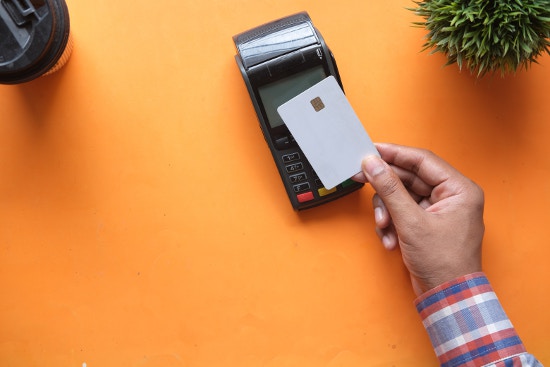Making financial transactions using various means besides cash is not new. What has changed over time is the different ways businesses and individuals make financial transactions without money.
These viable cashless payment and contactless options have gained momentum among users for some time because they enhance financial accessibility, remove complex processes or the need for physical cash, and provide quick and convenient means of financial transactions.
The COVID-19 pandemic is one main catalyst that contributes to this significant shift. In order to reduce physical contact, people and businesses explored payment methods that didn’t require physical contact and money, such as payment apps and bank cards.
Also, trusted financial institutions such as Swissmoney gravitated towards different payment processors and are leveraging the same to offer convenient and fast financial transactions to businesses and individuals without physical contact or money.
In this article, we will explore the future of payment as related to some of the payment methods on the horizon. I will also delve into some significant advantages and how some of these payment modes will shape the future of payment systems globally.
What Are Cashless Payment Systems?
Traditionally, financial transactions are made through and via physical currencies. This method requires a person to visit the physical branches of financial institutions before any transaction can be made.
While this system effectively eliminates cybercrime, it is slow and often more challenges that impact customers. As we move toward a cashless world, cashless payment systems become handy. Besides this fast payment, it enhances the customer experience by offering services they can access at their convenience.
Cashless payment methods have come to stay. People and businesses have no choice but to adapt to this change and enable more payment options for customers at the point of purchase.
Many payment processors have also quickly upgraded their systems to enable their customers to pay through cryptocurrencies and other contactless and cashless methods.
With the numerous benefits this system is bringing and given the push from customers for a robust system, it appears that no financial institution will be able to ignore this opportunity for long.
Therefore, it is important to discuss the future likelihood of cryptocurrency payments as well as other cashless payment forms as they are becoming mainstream in the financial services industry.
The Rise of Mobile Payments and Digital Wallets
Mobile payments have revolutionized the way transactions are conducted. With the increased use of smartphones and access to speedy internet, consumers can now make seamless payments through their electronic or mobile devices.
Many fintech have developed secure and user-friendly mobile payment apps that enable customers to pay for whatever they purchase with a simple scan or tap.
Contactless Payments
The contactless payment system is gaining significant traction in the financial service industry. This technology enables swifts and securing transactions by tapping or scanning a smartphone or contactless card near a payment terminal.
So far, we can that Fintech innovations have played a significant role in promoting contactless payment methods, improving convenience, and minimizing transaction time. Contactless methods became particularly relevant during the COVID-19 pandemic as they reduced physical contact and helped promote hygienic protocols.
The wide acceptable and rapid growth is driving the transition to a cashless world where there may not be reasons for physical money.
Advantages of Contactless Payments
- Speed: Contact payments are faster than traditional card transactions, minimizing the wait period that people usually experience at checkout times.
- Enhanced security: Contactless service providers leverage encrypted technology to secure transactions, reducing the risk of fraudulent activities compared to traditional card transactions.
- Convenience: With the ability to make payments with mobile devices anytime, anywhere, users don’t need to carry physical cards, everyone.
- Generally acceptance: With the system increasingly popular, many business owners are beginning to accept them as a means of payment.
However, users tend to struggle with challenges related to limited availability, cost, and having to rely totally on technology to make transactions.
Cryptocurrencies and Blockchain Technology
A viable means of payment that is currently transforming and has the potential to advance the future of payments is Blockchain technology. Blockchain technology is simply the underlying systems that provide a strong backbone to crypto like Bitcoins, Ethereum, and others.
Most organizations, especially Fintechs, and individuals, are leveraging blockchain’s immutable and decentralized structure to develop transparent and secure payment solutions.
Blockchain-based payments are unique in the sense that they provide numerous advantages, such as enhanced security, minimized transaction fees, and faster settlement. Crypto is gaining acceptance as a reliable payment option, enabling peer-to-peer transactions without the need for intermediaries.
While the system is struggling with undeniable challenges such as regulatory framework, cyber theft, and scalability, adopting blockchain technology and digital currencies is drastically changing the payment landscape by providing new opportunities that businesses can leverage to enhance customer experience.
Advantages of Crypto Payments
Compared with other types of payment, such as credit cards, crypto payments allow users to enjoy lower transaction expenses and faster settlement cycles.
More so, this payment system has the potential to build a borderless payment network that can provide a seamless transfer of crypto payments from anywhere globally. The providers of these services claim that the system maintains transparency in the dynamic exchange rates between fiat currency and digital currencies.
Using this system gives merchants unrestricted access to accept and transfer money from anywhere in the world. More so, business owners can also gain an authentic and reliable identity in virtual transactions.
Conclusion
The world is fast becoming a cashless society where all monetary transactions are done by using near-field communication technology and cryptocurrencies without using physical money or inserting the card into a card reader.
These media are not only faster than the traditional payment method, but they are also as convenient as we may think. It is unsurprising how these alternatives improve users’ experience daily and are becoming widely accepted across various industries.
As technology improves, we can expect to experience a greater increase in the use of digital currencies and contactless payments in the future.




















